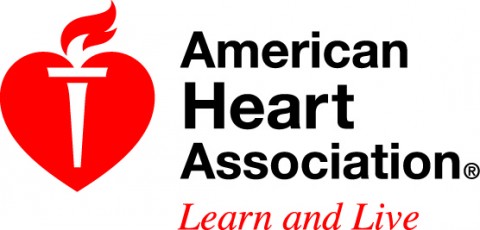American Heart Association Scientific Statement
 Dallas, TX – Obesity and severe obesity in childhood and adolescence have been added to the list of conditions that put children and teens at increased risk for premature heart disease, according to a new scientific statement from the American Heart Association published in the Association’s journal Circulation.
Dallas, TX – Obesity and severe obesity in childhood and adolescence have been added to the list of conditions that put children and teens at increased risk for premature heart disease, according to a new scientific statement from the American Heart Association published in the Association’s journal Circulation.

The statement provides an overview of current scientific knowledge about managing and treating the increased risk of atherosclerosis and early heart disease, in children and teens with type 1 or 2 diabetes, familial high cholesterol, congenital heart disease, childhood cancer survivorship and other conditions. Atherosclerosis is the slow narrowing of the arteries that underlies most heart diseases and stroke.
“Parents need to know that some medical conditions raise the chances of premature heart disease, but we are learning more every day about how lifestyle changes and medical therapies that can lower their cardiovascular risk and help these children live their healthiest lives,” said Sarah de Ferranti, M.D., M.P.H., chair of the writing group for the statement and chief of the Division of Cardiology Outpatient Services at the Boston Children’s Hospital in Massachusetts.
For example, there are treatments for familial high cholesterol – a group of genetic disorders that affect how people process cholesterol which can lead to extremely high cholesterol levels – that can help children and teens with this disorder live a normal lifespan.
The statement is an update of a 2006 scientific statement and adds obesity and severe obesity to the list of conditions that put children and teens at increased risk of cardiovascular diseases and reviews new treatments for previously discussed conditions.
Severe obesity and obesity are now considered moderate risk and at-risk conditions respectively because research shows they significantly increase chances of developing heart disease later in life.
A study of almost 2.3 million individuals followed for over 40 years found the risks of dying from a cardiovascular disease were two to three times higher if their body weight as adolescents had been in the overweight or obese category compared to youth with normal weight.
Effective treatments for obesity have proven elusive, but in general, a gradual approach to weight loss is generally required, incorporating improvements in dietary quality, fewer calories, more physical activity, meal replacements, medical therapy and/or bariatric surgery depending on the severity of the excess adiposity.
Other significant changes to the statement since 2006 include:
- The elevation of Type 2 diabetes to a high-risk condition because of its association with additional cardiovascular risk factors such as high blood pressure and obesity.
- The expansion of the risks of premature heart disease associated with treatments for childhood cancers.
Co-authors are Julia Steinberger, M.D., M.S.(Co-Chair); Rebecca Ameduri, M.D.; Annette Baker, R.N., M.S.N., C.P.N.P.; Holly Gooding, M.D., M.Sc.; Aaron S. Kelly, Ph.D.; Michele Mietus-Snyder, M.D.; Mark M. Mitsnefes, M.D., M.S.; Amy L. Peterson, M.D.; Julie St-Pierre, M.D., Ph.D.; Elaine M. Urbina, M.D., M.S.; Justin P. Zachariah, M.D., M.P.H.; and Ali N. Zaidi, M.D. Author disclosures are on the manuscript.
Additional Resources:



